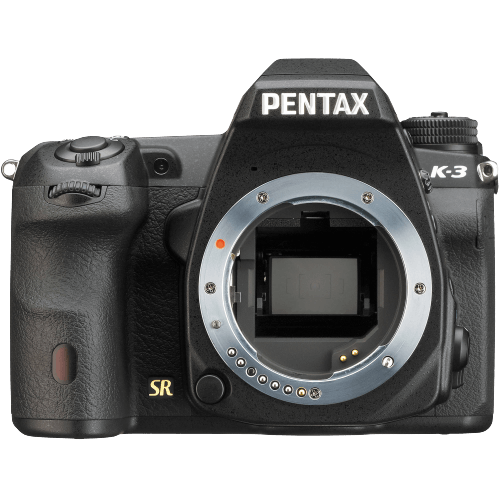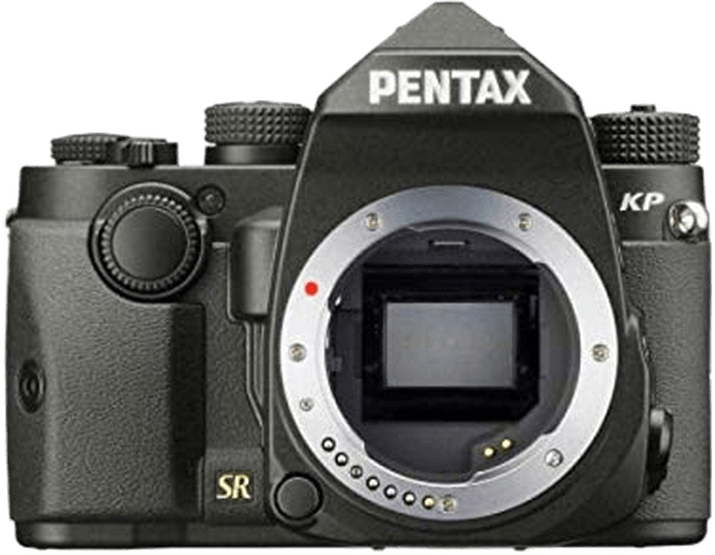Pentax K-3 vs KP Comparison
Pentax K-3

Pentax KP

The Pentax KP emerges as the winner with a score of 72/100, while the Pentax K-3 trails behind with a score of 69/100. Both cameras are DSLRs and share some common specifications, such as the announcement year (Pentax K-3 in 2013 and Pentax KP in 2017) and the launch price (Pentax K-3 at $1300 and Pentax KP at $1099).
The Pentax KP excels with its lighter weight of 703g (1.55lbs), making it more comfortable and portable for photographers. On the other hand, the Pentax K-3 has a slightly larger size (131 x 100 x 77mm) and heavier weight (800g or 1.76lbs), which might be preferred by some users for better stability during shooting.
Considering the specifications, the Pentax KP is the better choice due to its higher score, lighter weight, and more recent release year. However, the Pentax K-3 still offers a reasonable alternative for those who prefer a larger and heavier camera.
Pentax K-3 vs KP Overview and Optics
The Pentax KP takes the lead in optics, scoring 79/100, while the Pentax K-3 trails with a score of 74/100. Both cameras share several specifications, including 24 megapixels, CMOS sensor type, APS-C sensor size, Pentax KAF lens mount, and image stabilization. However, the differences in their shooting speed, processor, and DXOMARK scores contribute to the gap in their optics scores.
The Pentax KP outperforms the K-3 with its Prime IV processor and a higher DXOMARK score of 96 for the sensor. The improved processor enables the KP to process images faster and deliver better image quality. The higher DXOMARK score indicates superior sensor performance, resulting in better low-light capabilities and increased dynamic range. Thus, the KP is the better choice for photographers seeking enhanced image quality and processing speed.
On the other hand, the Pentax K-3 has a faster shooting speed of 8.3 compared to the KP’s 7. This advantage allows the K-3 to capture fast-moving subjects and action scenes more effectively. While the difference in shooting speed is not significant, it may benefit photographers who prioritize capturing quick moments over image quality.
In terms of optics, the Pentax KP is the superior camera due to its advanced processor and higher sensor performance. It delivers better image quality, making it ideal for photographers seeking optimal results. However, the Pentax K-3’s faster shooting speed may appeal to those who prioritize capturing action scenes. Ultimately, the choice between the two cameras depends on individual preferences and photographic needs.
Pentax K-3 vs KP Video Performance
The Pentax K-3 outperforms the Pentax KP in video capabilities, scoring 70 out of 100 compared to the KP’s 57. Both cameras share some common specifications, such as Full HD maximum video resolution, 1920 x 1080 maximum video dimensions, and built-in time-lapse functionality. However, there are key differences that make the K-3 a superior choice for video recording.
The most significant advantage of the K-3 is its higher maximum video frame rate of 60fps, compared to the KP’s 30fps. This allows the K-3 to capture smoother and more detailed footage, especially in fast-moving scenes or when recording action sequences. Videographers and content creators who prioritize high-quality video performance will find the K-3 more suitable for their needs.
On the other hand, the Pentax KP does not offer any notable advantages in video capabilities over the K-3. Both cameras share the same video resolution and dimensions, and both have built-in time-lapse functionality. The lower score of the KP is mainly due to its lower maximum video frame rate.
When comparing the video capabilities of these two cameras, the Pentax K-3 is the clear winner, due to its higher maximum video frame rate. The K-3’s 60fps capability provides smoother video quality and better performance in capturing fast-paced scenes. The KP, while still offering Full HD resolution and time-lapse functionality, falls short in comparison with its lower maximum frame rate of 30fps.
Pentax K-3 vs KP Features and Benefits
The Pentax KP emerges as the winner with a feature score of 68/100, 9 points higher than the Pentax K-3’s score of 59/100. Both cameras share several specifications, such as a 3-inch screen size and no touchscreen capabilities. However, the Pentax KP surpasses the K-3 in other aspects, contributing to its higher score.
The KP’s screen has a resolution of 921,000 dots, while the K-3 lags with 1,037,000 dots. The KP’s flip screen allows for more flexibility in capturing images from different angles. Additionally, the KP is equipped with GPS, WIFI, and Bluetooth, offering greater connectivity options for photographers. These features make the Pentax KP a more versatile camera compared to the Pentax K-3.
On the other hand, the Pentax K-3 has a larger screen size of 3.2 inches, providing a slightly bigger display for photographers. However, this advantage is not significant enough to outweigh the KP’s superior features.
In terms of features, the Pentax KP clearly outperforms the Pentax K-3. Its higher resolution, flip screen, and advanced connectivity options make it a more user-friendly and adaptable camera. The K-3’s larger screen size is a minor advantage but fails to compensate for its shortcomings. Thus, the Pentax KP is the better choice for photographers seeking a camera with more advanced features and capabilities.
Pentax K-3 vs KP Storage and Battery
The Pentax K-3 outperforms the Pentax KP in storage and battery with a score of 63/100 compared to the KP’s 21/100. Both cameras share common specifications, such as accepting SD, SDHC, and SDXC memory cards and lacking USB charging capabilities.
The K-3 holds an advantage with two memory card slots, providing more storage and flexibility for photographers. Additionally, the K-3 has a longer battery life, capable of capturing 560 shots with its D-LI90 battery, compared to the KP’s 390 shots using the D-LI109 battery.
The Pentax KP, however, offers compatibility with UHS-I memory cards, allowing for faster read and write speeds. Despite this advantage, the KP falls short in other storage and battery aspects.
Taking these factors into account, the Pentax K-3 proves to be superior in terms of storage and battery performance, while the Pentax KP offers a minor advantage with UHS-I memory card compatibility.
Pentax K-3 vs KP – Our Verdict
Are you still undecided about which camera is right for you? Have a look at these popular comparisons that feature the Pentax K-3 or the Pentax KP:
